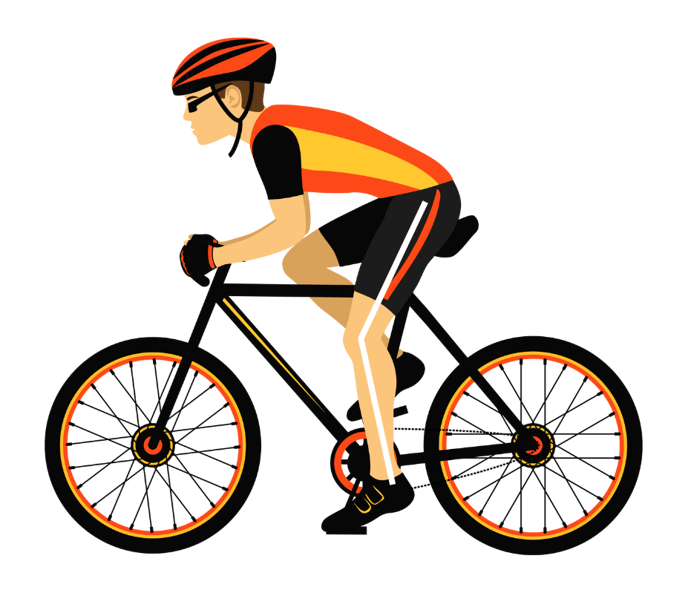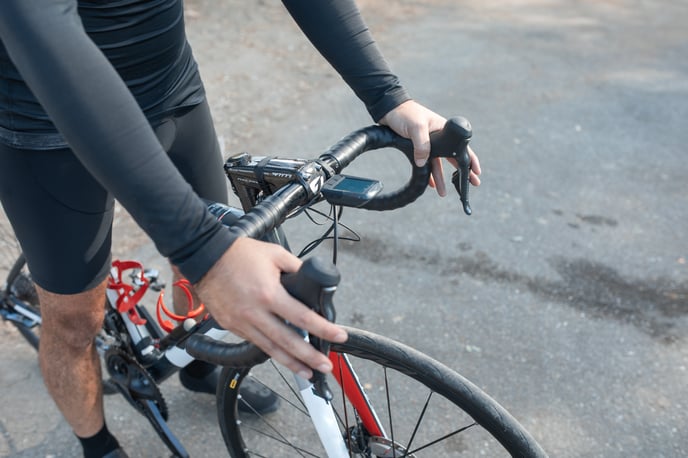This article will help you to find correct position and settings on your bike with simple tips, to enable comfortable riding.
Setup of the bike
For enjoyable kilometres of riding your bike, it´s important to adjust your riding position, allowing you to pedal efficiently, without pains and numbing. There are three contact points between the rider and the bike: the saddle, the handlebar grips and the pedals. Here are some tips for fine tuning your position and the set up of the bike:
Saddle
Easiest, the most obvious and also the most important adjustment is setting your seat height. The right saddle height allows you to pedal efficiently without pain or preassure. Especially for the unexperienced riders, it would be tempting to keep the saddle a bit too low, to allow the feet flush to the ground when stopping, but running your seat too low typically creates knee problems and pain, and puts overly much strain on your large leg muscles, like the thighs. Saddle set up too makes your pelvis rock from side to side, causing back, pelvis and soft tissue pain and possible problems. It also makes it more difficult to manouver the bike.
There´s an easy rule of thumb for setting up your approximately correct seat height. When seated on the bike, put your heel on the pedal. Rotate the cranks to align the crank arms with the seat tube, the heel on the pedal down. Your leg should now be straight and extended. You then move your foot and put the ball of the foot on the pedal, like you would when pedaling. Now there should be a few degrees angle on your knee. (see photo below)

You can also adjust the tilt and fore-aft position of your saddle. Generally a good starting point for the tilt is to adjust your saddle horizontal, when looking from the side. Some riders prefer to have saddle nose slightly tilted forwards. This could though lead you leaning forward, putting too much pressure on your wrists and arms. The fore-aft position depends more on your physical measurements and flexibility. Here the goal would be to have comfortable position without loading your arms or feeling overly extended. The fine tuning of a seating position is more of a concern of sportive riders and bikes, like road bikes, but of course anyone will benefit finding their sweet spot for seating on a bike.
Handlebars
Setting the handlebars tilt is again more of an issue for the drop bar riders. But again, everyone can experiment with with the tilt and try to find the optimal set up. When adjusted right, your wrists and elbows are relaxed while riding. If you´re riding with your elbows straightened and wrists “locked”, you will most likely feel pains on your shoulder and neck muscles during or after longer rides. Excessive preassure on riders wrists and palms can also cause nerve problems and numbing fingers.
Handlebar grips are your contact points to handlebars. They should be comfortable to hold on to, helping you to keep a relaxed riding position. If your grips feel completely wrong, they are easy and cheap to get replaced. Some riders like the so called ergonomic grips, which are typically a kind of a flared design to provide a larger supportive surface for the palm and to reduce pressure on palms.
Give some thought for your brake levers, too. You should be able to effortlessly put your fingers on brake levers, without lifting the fingers or having to rotate your wrists to reach the levers. Usually it feels quite natural to align the levers with your arms when sitting in the saddle. The reach of the levers can be adjusted closer to the handlebar, which is important if you´ve got small hands. (see example of good position on the photo below)

Pedals
With normal pedals there´s nothing to adjust. If you need to assemble the pedals on the bike yourself, just be sure to check the threads on the pedal axles. They often have R and L stamped on the axles to indicate which one is which. Drive side/right pedal has normal clockwise threads and the non-drive/left pedal is threaded counterclockwise. Incorrectly assembled pedals will damage the threads and may fall off while pedaling.
If you´re using clipless pedals, you can adjust the cleat position and the spring force needed for retention. Typically the correct cleat position puts the pedal axle right under the ball of the foot for the most natural pedaling movement. Adjust the cleat angle so that your shoe is “straight” when clipped in. Usually the cleats allow for some lateral play of the foot, to avoid knee problems. Make sure the retention springs are not too tight and you can easily disengage from the pedals.
Tires
Although not a contact point between the bike and the rider, the tires have dramatic effect on the ride quality. When inflated to correct pressure, the tires will roll easily without feeling overly harsh. Check your tire pressures often with a quality pump equipped with a pressure gauge. Pump the tires up to the recommended pressure. You´ll find the recommended pressure range stamped on the side of the tire. Good starting point is to try the lower end of the recommended pressure range. Heavier riders might need to add some more pressure, and the mountain bikers benefit from riding lower pressures through added traction. Too low pressure has a negative effect on the rolling resistance and easily leads to punctures.